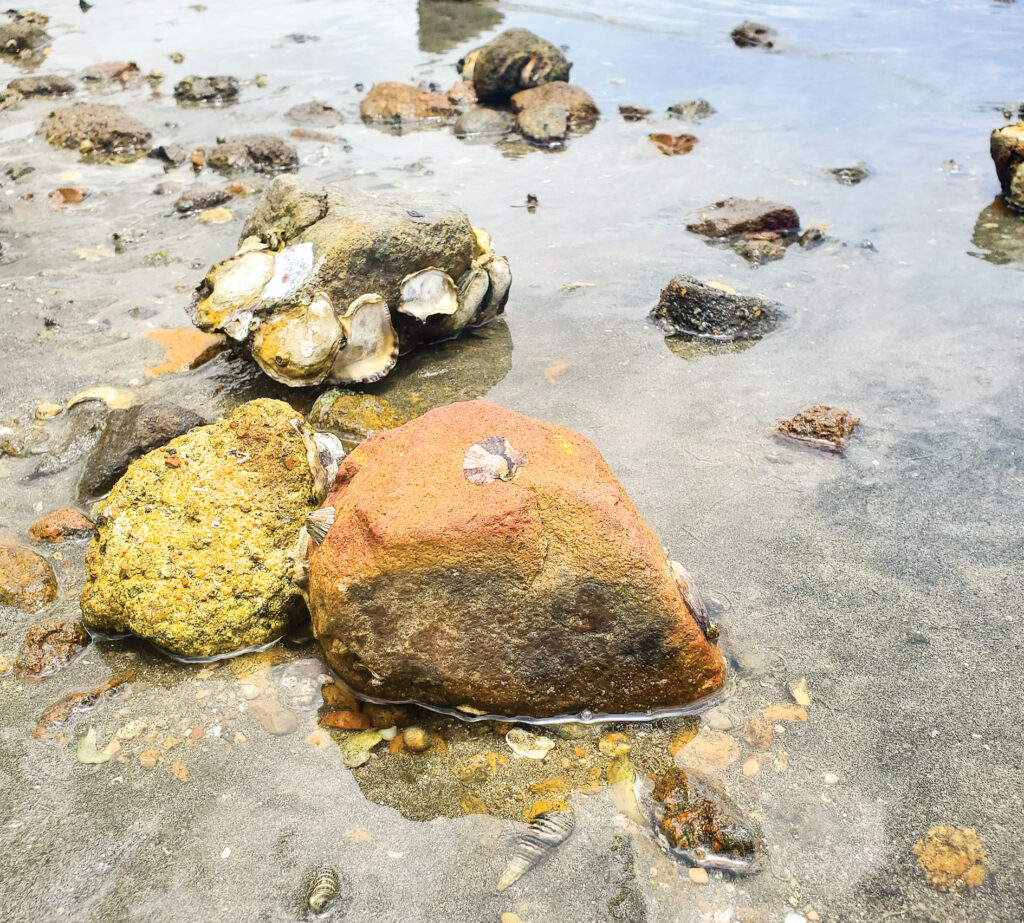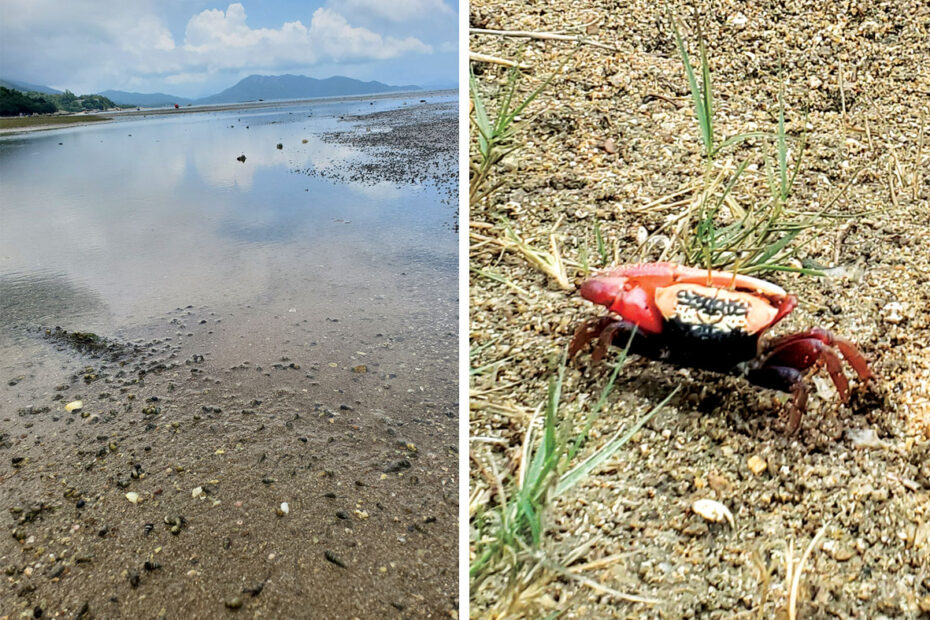Reporting & Photos by Rachel Sadler
Situated in the far southwest of Lantau, Shui Hau is a unique area comprising numerous coastal habitats, including intertidal sand and mudflats, marshes, mangroves and rocky shores. The mudflats are among the best coastal wetlands in Hong Kong, and Shui Hau is a designated marine reserve.
The ecosystem in the mudflats is diverse with more than 180 species recorded. While beachcombing, you can expect to find giant Asiatic clams, spiral-shelled snails and cockles as big as your hand. Swarms of tiny fish ebb and flow in the nearby shallows attracting birds like the Little Egret and, during migration season, a few shorebirds.
Navigating your way across the mudflats at low tide, be prepared to witness hundreds of brightly coloured juvenile horseshoe crabs scurrying across the flat sandy beach, dipping in and out of their tiny holes in the sand. Though they may hide as you approach, carefully crouch down and remain silent; and the crabs will re-emerge from their burrows for you to admire.

Known as ‘Living fossils,’ juvenile horseshoe crabs spend an average of 10 years on the mudflats before migrating to the sea, when they reach sexual maturity. Shui Hau’s high biodiversity and soft flats ensure it is a suitable nursery – it is one of the few breeding sites in Hong Kong for this scarce and declining species.
WWF’s Shoring up Shui Hau project aims to preserve the ecological value of the area and minimise human disturbance, whilst encouraging long-term sustainable use of coastal resources. Unregulated clam digging is a serious problem in the mudflats since it can lead to juvenile horseshoe crabs being trampled and may reduce the availability of their prey.
The easiest way to get to Shui Hau is by bus from either Tung Chung or Mui Wo, and there are two routes to the mudflats. You can walk there from the village, past small vegetable plots and through abandoned fields. Or, you can take the equally tranquil path alongside a football pitch, just east of Shui Hau. Both paths lead to the west of Shui Hau Wan, where small streams run in from the hills.
